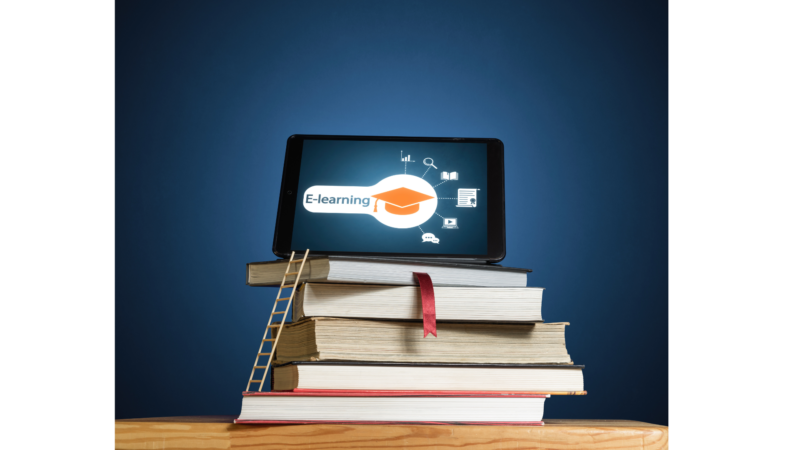Blog
Small Bites, Big Gains: Microlearning’s Upskilling Impact

As 2024 dawns on us, we consider what comes ahead in the new year. One of the advantages of the new year is the chance to become better and to explore and learn new things, personally and professionally.
Microlearning has revolutionized professional development, particularly in upskilling. It distributes concentrated, bite-sized knowledge, changing traditional skill development methods. This article examines the significant impact of microlearning on skill development and the dynamic relationship between it and upskilling.
Microlearning modules are becoming more efficient, replacing traditional long training sessions in today’s fast-paced environment. They fit modern professionals’ time constraints and businesses’ shifting demands by breaking complex skills into short, easily assimilated chunks.
The Advantages of Microlearning
Microlearning, which is distinguished by its concise, targeted learning modules, has several advantages:
1. Change in Content
Microlearning is an agile learning approach that helps organizations return to the core of how business was conducted naturally instead of trying to jam as much information as possible into a lengthy course and ensure that people finish and record it. Well-crafted microlearning consists of more than just condensed training material. It provides a reinvention of the way individuals engage with and process educational materials.
2. Enhanced Retention
Microlearning maximizes knowledge transfer and information retention by utilizing the concepts of spaced repetition and focused material delivery. Learners can absorb content more efficiently when presented in short, clearly understood pieces, enhancing long-term memory of essential ideas and abilities.
3. Flexible Learning Experience
Microlearning provides learners with unmatched flexibility by allowing them to access content on any device, anytime, and from any location. Thanks to this flexibility, which considers their varied learning preferences and hectic schedules, professionals can learn at their own pace and convenience.
4. Targeted Skill Acquisition
A laser-focused approach to skill improvement is made possible by microlearning. Every learning module has the potential to target a specific skill or meet unique learning objectives. This accuracy guarantees that students gain the required skills organizationally and effectively.
5. Time Efficiency
Microlearning’s brevity allows students to access and finish learning courses quickly. Working professionals can learn in short, concentrated bursts, maximizing their limited time and quickly incorporating skill development into everyday activities.
Impact of Microlearning on Upskilling
According to a study titled “Short Communication: Microlearning Courses are Effective at Increasing the Feelings of Confidence and Accuracy in the Work of Dairy Personnel” (Hesse et al., 2019), the short, interactive nature of microlearning modules enhances knowledge retention and application. With 80% of the participants reporting that they were persuaded to work more accurately after completing the microlearning course, the results demonstrated high engagement and a good effect on their performance. Furthermore, following the training, 78% of the staff reported feeling more confident in their capacity to finish jobs successfully.
Instructional designers should consider the benefits of integrating microlearning into eLearning programs, as shown by studies such as the one carried out by Hesse et al. (2019), while viewing the application of microlearning in upskilling. The research above bolsters the incorporation of microlearning as a potent tactic for augmenting skill acquisition and cultivating ongoing learning within the field of instructional design.
Incorporating Microlearning into eLearning Programs
Take into account the following tactics to fully utilize microlearning in eLearning programs:
1. Interactive Learning Activities
Create interactive exercises, such as case studies, scenario-based simulations, and gamified quizzes, that encourage active learning and reinforce skill improvement. These interactive components improve skill transfer to real-world circumstances by encouraging students to use their knowledge in plausible contexts.
2. Mobile-Friendly Delivery
Make sure that microlearning modules are mobile-friendly to provide easy access to educational materials while on the road. The ability to connect with learners on their phones and tablets increases the scope of learning options and improves the efficiency of skill development for Instructional Design experts.
3. Modular Content Design
Divide complex material into manageable learning modules, each concentrating on a specific ability or learning goal. This modular approach fosters greater comprehension and skill development by providing learners with focused knowledge.
4. Personalization and Adaptive Learning
To make microlearning experiences more unique, use data analytics and adaptive learning tools. To ensure a more focused and practical skill development journey, analyze learner performance and preferences to give recommendations and information that are specifically tailored to them.
We can design highly effective learning experiences that enable learners to effectively acquire and apply new abilities by utilizing the advantages of microlearning, such as improved retention, time efficiency, flexibility, and targeted skill acquisition. Excellent content design, interactive exercises, mobile-friendly delivery, and individualized learning strategies are necessary for integrating microlearning into eLearning programs. This strategic incorporation of microlearning enhances the overall learning experience. It empowers learners to adapt their educational journey to their unique preferences and schedules, fostering a more personalized and engaging approach to professional development.
Coursebank Philippines harnesses microlearning’s transformative power as an eLearning platform, offering modular lessons for self-paced study. In today’s demanding professional landscape, microlearning proves essential for upskilling, acknowledging traditional training limitations. By breaking down complex subjects into manageable modules, Coursebank enables focused learning without overwhelming users. This approach aligns with modern work dynamics, where time is precious, and flexibility is crucial. Recognizing diverse learning styles and schedules, the platform’s microlearning modules empower users to learn on their terms, fostering motivation and a culture of continual growth.
References:
1. Johnson, Ed.D., Reginald. (2023). “The Impact of Microlearning On Skill Development”. Accessed December 19, 2023. (https://elearningindustry.com/the-impact-of-microlearning-on-skill-development)
2. BeaconLive Marketing Team. (2023). “What Is Microlearning – and What Are Its Advantages?”. Accessed December 19, 2023. (https://www.beaconlive.com/blog/microlearning-benefits)
By Theadora Malvar
Coursebank Content Writer and Instructional Designer




